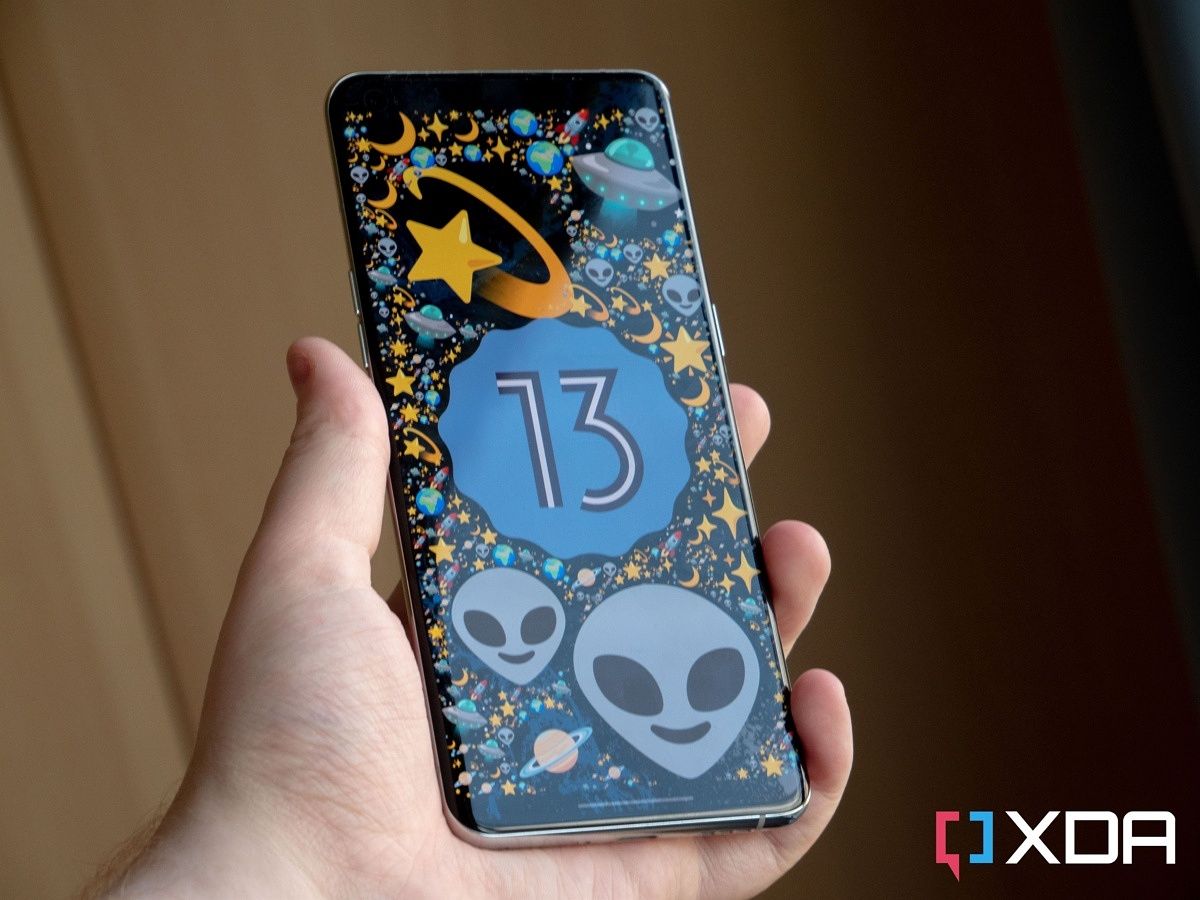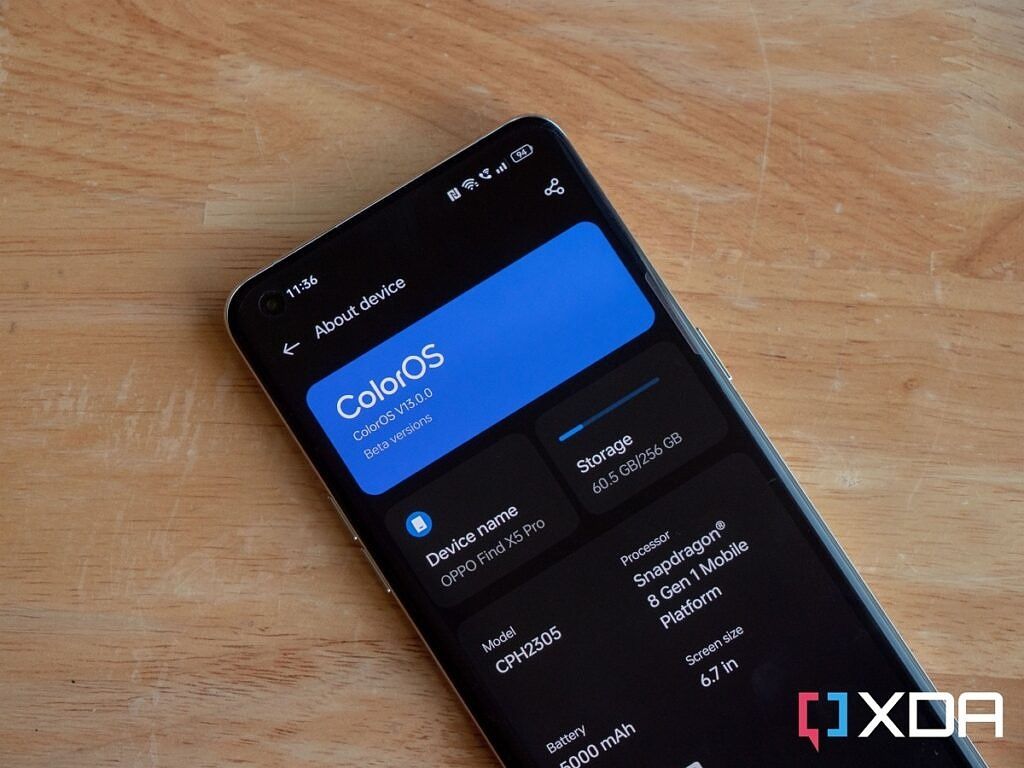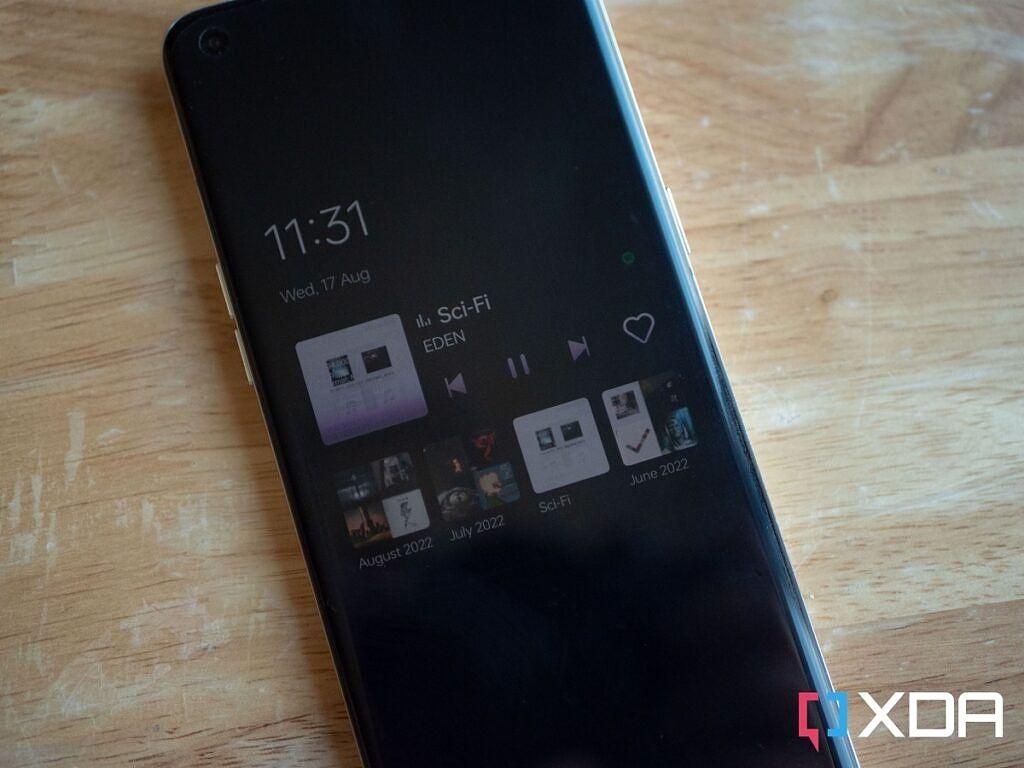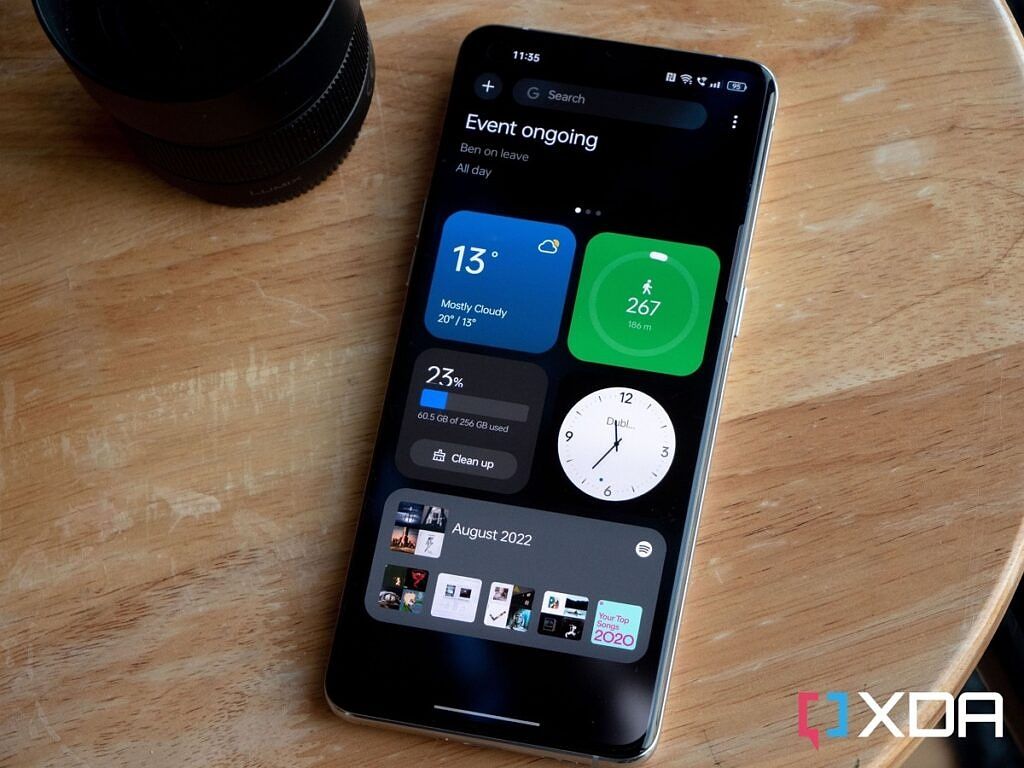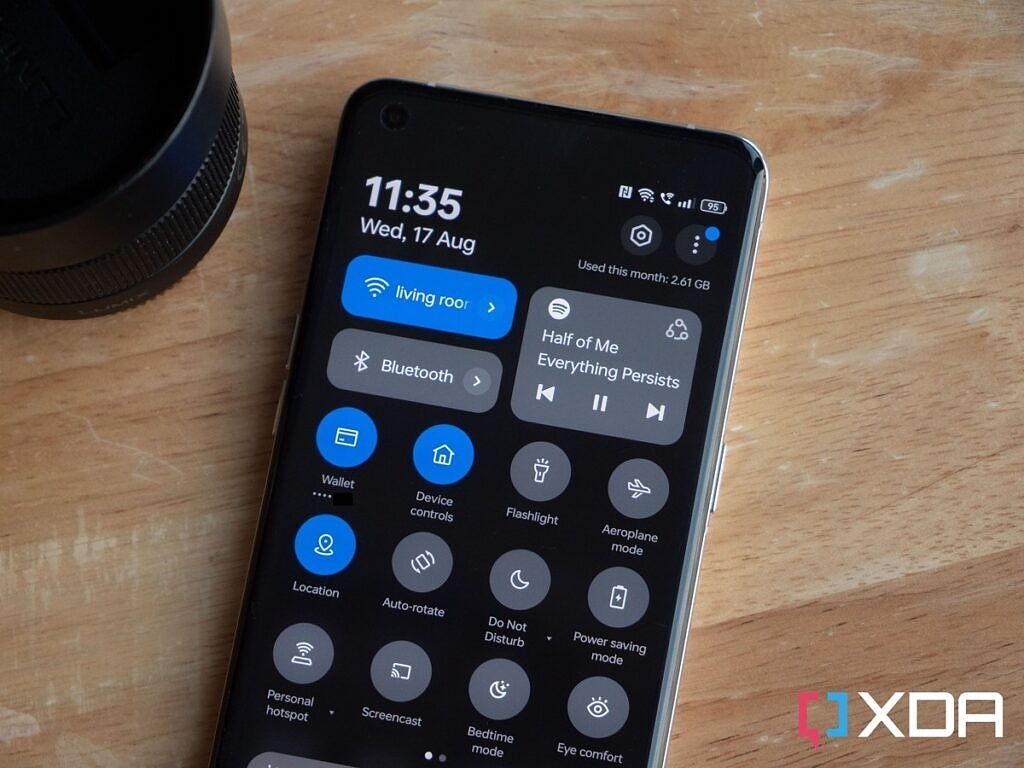Remember when it was said, long ago, that Oppo and OnePlus were working on a Unified OS? The premise was simple: it was the best of both ColorOS and OxygenOS packed into one clean operating system based on Android. While that has since been dead and buried, it's clear that there is more than just a passing similarity when comparing recent OxygenOS versions to ColorOS. It seems the companies have doubled down though, as if you've seen the recent OxygenOS 13 Open Beta, you've also seen ColorOS 13.
ColorOS has come a long way since the days when it looked merely like another iOS rip-off. It's built its own identity with its own incredible set of features, and it's one of my favorite Android variants to use nowadays. It doesn't get everything right, but it nails the basics and adds some great features on top. I've been using an alpha build on an Oppo Find X5 Pro for the past week that recently updated to the beta version, and so far, it's a great approach to Android 13.
About this hands-on: Oppo provided us with an Oppo Find X5 Pro preloaded with ColorOS 13 for the purposes of this article. While the company provided us with a unit and software access, it did not have any input into the contents of this hands-on.
Design and UI changes
I prefer how ColorOS 13 looks to stock Android 13
There are a ton of small changes across the system which means it looks better now than ever before. The most important and noticeable change is how the quick settings are laid out. The media player is always visible, but it's a smaller square that's relegated to the top right of the quick settings, rather than taking up a ton of space below them. I prefer how it looks to stock Android 13, to be honest, though that might be controversial.
Shelf
If you're familiar with the OnePlus Shelf, that's... basically what this is. It's not exactly a subtle recreation of the feature, and it works the exact same way as it does on OxygenOS 13. You can pull it down anywhere on the launcher to invoke it, though you can't access it from within other applications at the moment. You'll also need to enable it within the launcher -- by default, pulling down will just access your notifications.
Shelf looks good and is fluid to use
There's not a whole lot that it can do currently, but it integrates with Spotify and allows you to add some custom widgets to it that can be accessed quickly from your home screen. It looks good and is fluid to use, so I think that with some tweaks to make it more usable across the system, it could be really good. I think that it could do with taking some inspiration from MIUI's Control Centre, as that's a lot more useful.
Automatic screenshot pixelation
Have you ever wanted to take a screenshot of a conversation and quickly share it online? Typically you'll want to scrub out the details of the sender, and maybe even their profile picture, depending on where exactly you're sharing it. That takes time, and I've found myself having to edit my screenshot and draw over it, which can be annoying. ColorOS 13 adds a feature to automatically pixellate these identifying elements of your screenshot, which in turn saves you time.
Currently, the feature is fairly primitive. It only works in Facebook Messenger and WhatsApp for the moment. It uses AI to identify elements that need to be blurred out. It'll wipe out a contact's name and profile picture wherever it's shown -- when it works -- though I find myself still needing to do it manually sometimes. It's not completely consistent in Facebook Messenger but works most of the time.
Always on display changes
ColorOS adds a few things to the always-on display. Not only do you get new additions, such as one that is meant to demonstrate global warming, but you also get extra ones like "Insight"... again, another OnePlus-like display. However, one that's all new to ColorOS (and will be coming to OxygenOS) is always-on display integrations. Food delivery apps will be able to make use of it, but currently, Spotify is one that works right out of the box.
How it works is pretty simple. You'll get a little Spotify widget on your always-on display that you can actually interact with on your phone's display. It's a lower frame rate, but you can use it to see more music information and even change the currently playing playlist. It's a bit of a gimmick, but it has a lot of potential use. I can definitely see how it could be useful for food delivery for instance, as that kind of real-time information on your display is useful.
Blossom wallpaper
ColorOS 13 adds a new Blossom wallpaper, and it's a pretty interesting way to measure your phone usage. You can set a maximum length of time to use your phone during the day, and as you use your phone, a plant will grow on your wallpaper. Once you exceed the time that you have chosen (which defaults to three hours), the plant will start to wither and die. It takes on the color of your most used app, though from our usage, also seems to default back to blue for Material You colors.
Multi-Screen Connect
Multi-Screen Connect is a feature that sounds cool in practice but is kind of broken at the moment. I can connect to my phone from it by scanning a QR code, but the network detection support is iffy at best. Sometimes it works, sometimes it doesn't, and not everything works, either. Even when I do get the screen sharing and remote control aspect of it working, stuff like clipboard sync and file transfers still don't work. I'm not sure if it's because I'm using beta software, or if it's going to be like this in the future. I'll reserve judgment for now, but it's not a good sign at the very least.
When I did get it working, I was amazed at the fact that I could open individual apps in their own windows on my PC. I could open Google Chrome into its own window that was still controlling my phone, while then swiping and navigating other apps, too. It was surprisingly versatile, and I could see it being useful at times if you do a lot of organization on your smartphone. These features often turn out to be gimmicks, but I think things like live notifications and instant transferring of screenshots and pictures from your phone to your computer could be useful.
More customization options with wallpapers
You can create your own wallpaper from an image stored on your phone, using colors from the image that you select. Once you set that photo as your wallpaper, you can then select colors from the wallpaper to use throughout the system. The color-theming engine is basically just Material You, except with a unique spin that allows you to create your own wallpaper in the first place from an image you may like that has colors you enjoy. The wallpapers it creates aren't all that unique as it uses the same geometric shapes each and every time, but it's a cool gimmick that you can pair with Material You to have a bit of a unique take on your phone's look.
All the other Android 13 changes
ColorOS 13 also packs all of those other Android 13 changes you know and love. That includes app language preferences, app notification requests, automatic clipboard clearing, and more. It's an update that primarily focuses on security and usability, but Oppo's improvements in ColorOS 13 ensure that there's something for everybody. It looks even better than ColorOS 12, and in my opinion, looks a lot better than stock Android 13, too.
ColorOS 13 is a smaller upgrade filled with improvements and cool features
Android 13 is a lot more of an iterative improvement over Android 12, and there's nothing wrong with that. There are no big overarching changes that redefine what we know Android to be, and that doesn't have to be the case every time. There are a ton of usability improvements and security changes that are more than enough, and Android 13 polishes some of the rough edges that Android 12 had.
ColorOS 13 is its best iteration yet
In that same vein, ColorOS 13 accomplishes the same thing. Oppo has been improving its ColorOS for a while now and brought it quite close to a more stock-Android look versus how it used to look years and years ago. Since then, it's now begun to branch back out with unique visual tweaks and changes that look good, and ColorOS 13 is its best iteration yet.
If you have an Oppo phone, the company has also announced when you can expect a beta to pop up for your device. The availability timeline is as follows.
- August 2022: Find X5 Pro, Find X5
- September 2022: Find X3 Pro, Reno8 Pro 5G
- October 2022: Reno8 5G, Reno7 Pro 5G, Reno7 5G, Reno7, Reno6 5G, F21 Pro, K10 5G, A77 5G, A76
- November 2022: Reno7 Z 5G, Reno6 Pro 5G, Reno6 Pro 5G Diwali Edition, Reno6 Z 5G, Reno5 Pro 5G, Reno5 Pro, F21 Pro 5G, F19+ Pro, K10, A96
- December 2022: Find X5 Lite, Find X3 Neo 5G, Find X3 Lite 5G, Find X2 Pro, Find X2 Pro Automobili Lamborghini Edition, Find X2, Reno8, Reno8 Z 5G, Reno5 5G, Reno5 Z 5G, A94 5G, A74 5G
- From H1 2023: Pad Air, Reno8 Lite 5G, Reno7 Lite 5G, Reno7 A, Reno6, Reno6 Lite, Reno5, Reno5 Marvel Edition, Reno5 F, Reno5 Lite, Reno5 A, F19 Pro, F19, F19s, A95, A94, A77, A74, A57, A57s, A55, A54 5G, A53s 5G, A16s
It's expected that the stable version for your smartphone should release a little while after the company starts beta testing an Android 13 release.

